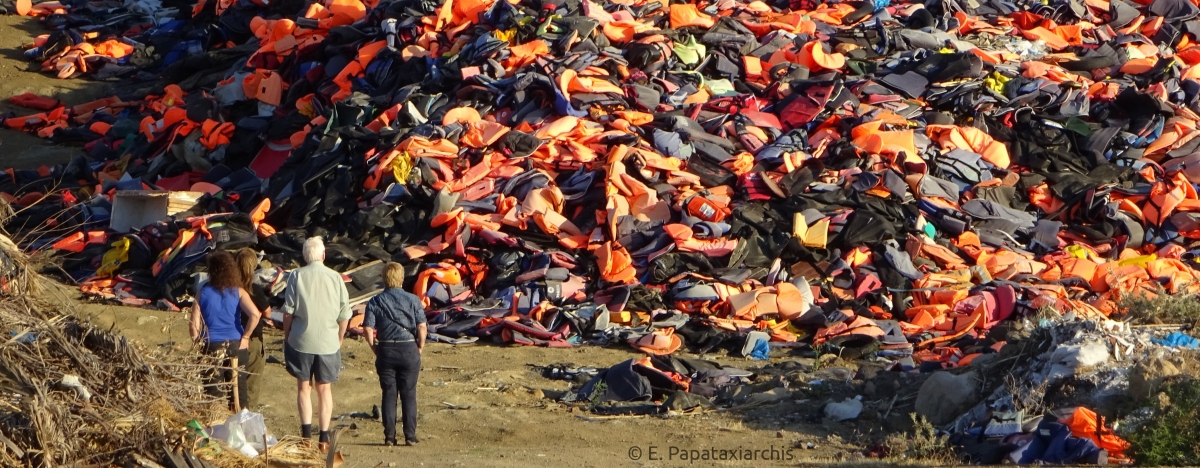
Population movements in the Aegean
The entry of more than one million border crossers into the territory of the European Union in 2015 is of enormous importance in the history of contemporary Europe, as well as the result of more general trends of increasing migration globally. The Aegean, as the Easternmost external border of the European Union, has long experienced population movements, but the massive inflows over the course of 2015 have no precedent over the past decades. The islands of the Eastern Aegean, and in particular Lesvos —an island that received more than half of the refugees and migrants who entered the European Union during 2015– have emerged as the geographic focal pointof the largest population movement in Europe since the end of the Second World War. As a result, the Aegean islands became the frontline of the great humanitarian crisis that marked this movement. This constitutes the impetus for the establishment of the Observatory of the Refugee Crisis at the University of the Aegean, the only university institution in the Aegean archipelago.
“Crisis”
In Greek, crisis (or krisi) refers not just to a historical moment, but to the act of judgement and critique. This double meaning suggests that we must approach the term crisis reflectively and critically. Current media use of the term "European refugee crisis" dehistoricizes a phenomenon that is in fact dispersed over a range of temporal moments, including wider population movements in the Mediterranean which began in the wake of the "war on terrorism" at the beginning of the 21st century and which continue, uninterrupted, until today—with changing geographical foci. This “crisis” is also dispersed in space, as it is a facet of the global phenomenon of displacement (often referred to as displacement from the “Global South”) propelled by war, socioeconomic inequality, environmental devastation, etc. However, the dramatic peak in population movements owing to the war in neighboring Syria makes it necessary to talk about a "crisis" with major consequences for the European continent, and for the European societies that the displaced must pass through, given their great political impact on so-called “buffer” states in the EU.
“Refugee” and “migrant”
The classification of these population movements is a crucial topic of discussion in the community of researchers engaged in the study of displacement. There are serious arguments in favor of the general use of the term “migrant,” irrespective of the economic, political, or environmental reasons for movement; just as there are arguments for maintaining the “refugee” category owing to exigencies of the institutional and legal guarantees (specifically, provision of asylum) for people who are forced to expatriate and who cannot return to their homes.
We recognize the historically and culturally constructed character of these categories; their institutionalization in official discourses such as international law; the social and political consequences of the terms in diverse contexts; and the ways in which their boundaries often blur. Because we are interested not just in population movements, but in the institutional, legal, and social realities that shape and respond to them, we have opted to employ the existing legal classification used by the United Nations, and use “refugee” and “migrant” as distinct terms.
A critical Observatory
Why 'Observatory'? "Observatory” carries controversial connotations of "objectivity," of an absolute separation between the observer and the observed, of the “all seeing eye” conjured by the ‘panopticon’ of institutions of confinement such as prisons: in other words, of institutional surveillance.
This Observatory, however, recognizes that human beings are subjects, not objects, and that the transformation of aspects migrant lives into “data” is organized around specific inter-subjective relationships. The Observatory recognizes that it operates within certain historically-constituted fields of power, and that it is limited by the blind spots inherent to power relations. What it observes, then, is not a distinct and objectified category of human beings but a set of phenomena in which refugees, migrants, reception communities, NGOs, scholars, government actors and others are engaged and differentially positioned in those fields of power.
The data found here, then, irrespective of their character (qualitative or quantitative), their institutional status (coming from ordinary people or from official bodies such as the Coast Guard, the Police or the UNHCR), and their level of formal validity, are inter subjective and relative to the conditions of their production.
What we aim to do as a critical observatory is to systematically recognize the contingent nature of the material we present and to report it in a way that situates it within the contexts in which it emerged. We thus seek to reframe this material in terms of methodological transparency and through meaningful reflection on the role and position of the “observer”. Even as we hope to produce a more multifaceted, and in that sense, more reliable picture of the “refugee crisis” as lived on the ground by diverse actors, a grounded, (self) critical, reflexive approach to the instruments of data-collection and knowledge production is essential. As such, the value of this observatory lies as much in its critical approach to the production of qualitative and quantitative data, as its role in the advancement of data surrounding less visible aspects of the refugee crisis. These methodological reflections have particular importance owing to the contested meanings and the enormous political stakes that characterize refugee and migratory phenomena.
